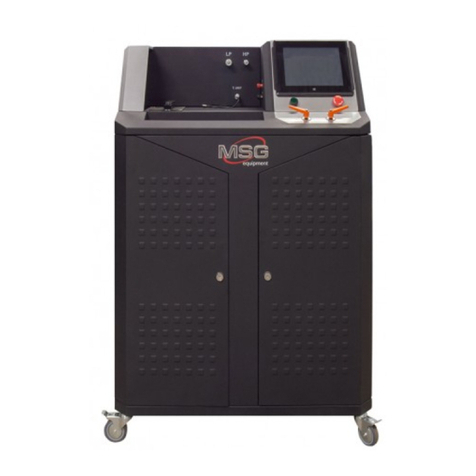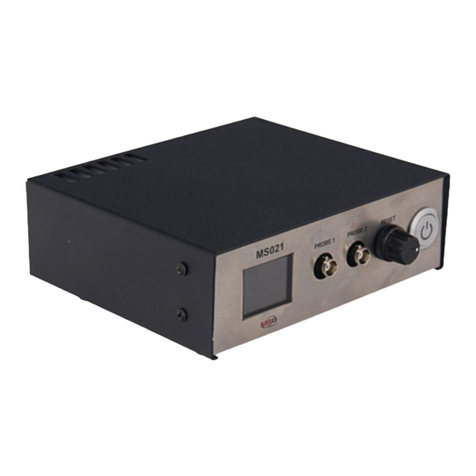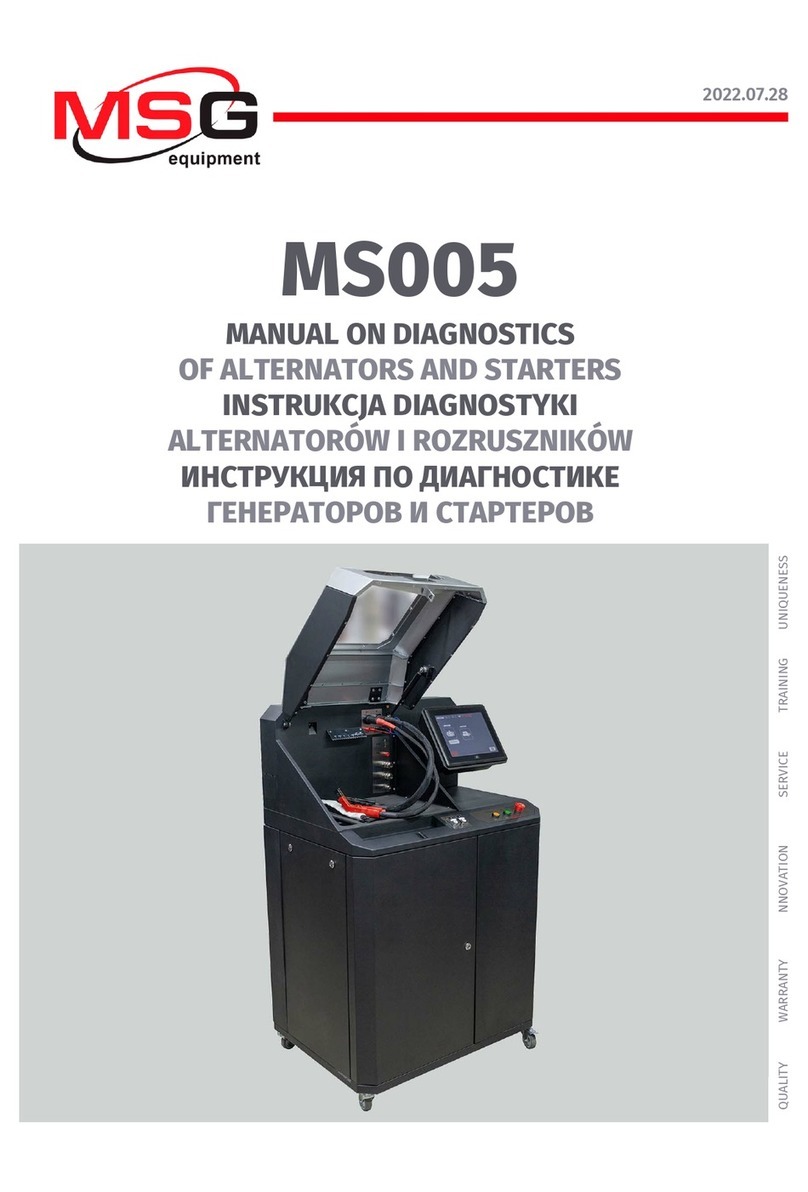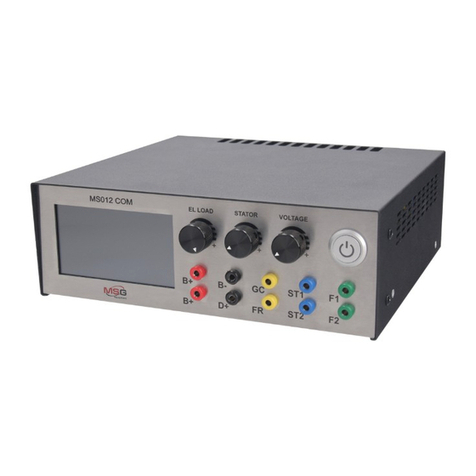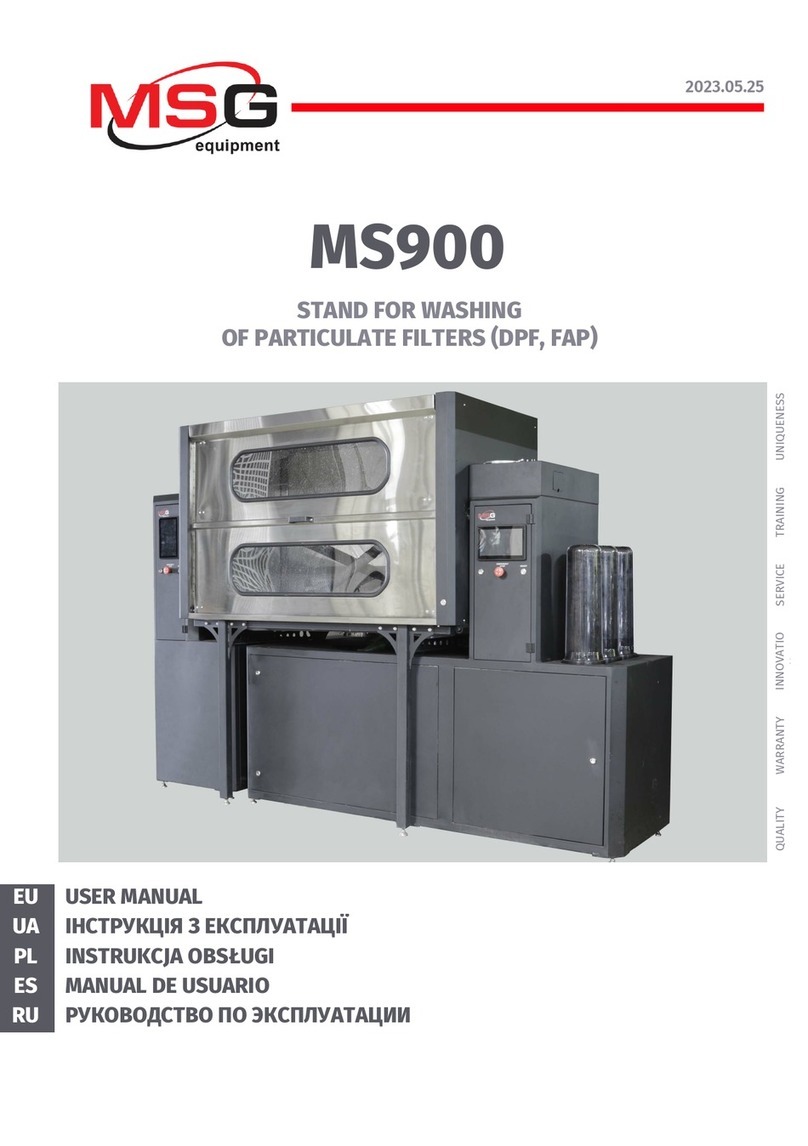
English
Test bench MS111
10
5. APPROPRIATE USAGE
1. Use the test bench as intended only (read Section 1).
WARNING! The Test Bench operates on refrigerants either R134a or R1234yf. It is strongly
recommended not to use other refrigerants. Oil PAG46yf must be used for thesystems on R1234yf
and R134a.
2. Turning off the bench should be done through the interface of the service program by pressing
the "Turn off the bench" button.
3. Use the button «EMERGENCY STOP» only if necessary to stop the diagnostic process in an
emergency.
4. The accuracy of the compressor test depends on the amount of refrigerant in the test bench.
Observe standard filling rate.
5. The refrigerant leak occurs every time after the replacement of a tested unit. Refrigerant
deficiency in the system leads to inaccurate test results and may cause damage to the tested unit.
Evacuate refrigerant from the system at the end of the working day and fill it in before you start.
6. In case compressor sealing gaskets lost their airtightness, air can enter the system during
refrigerant pumping. Air in the system may cause diagnostics inaccuracy and damage to the tested
unit.
Refill the system after the message “Too much air in the system” appears on the screen.
7. Automatic test mode is intended for the initial assessment of compressor performance and
cannot be used for detection of such latent faults as, for example, sporadic sticking of a control
valve and some others.
If any malfunction is detected during automatic testing, proceed with a manual test for accurate
diagnostics of a unit.
8. During compressor diagnostics, wear particles normally retained by the test bench filters, can
penetrate the system. These filters require periodic replacement. The test bench will signal the
necessity for filter replacement.
Do not test compressors with obvious symptoms of malfunction. For example, the oil in a
compressor is black and has metal shavings in it.
9. The use of inappropriate computer hardware or firmware will cause cancellation of the warranty
(even if the computer facilities or programs were removed or deleted shortly after). Only the MSG
Equipment original firmware can be used with this equipment.
10. To prevent the damage and the failure of the bench, do not make any modifications in the
bench in your discretion. Any modifications can be effected by the official manufacturer only.
Should the bench have defects contact the manufacturer or a dealer.
11. In case of failures in the operation of the bench, stop further operation and contact the
manufacturer or sales representative.












